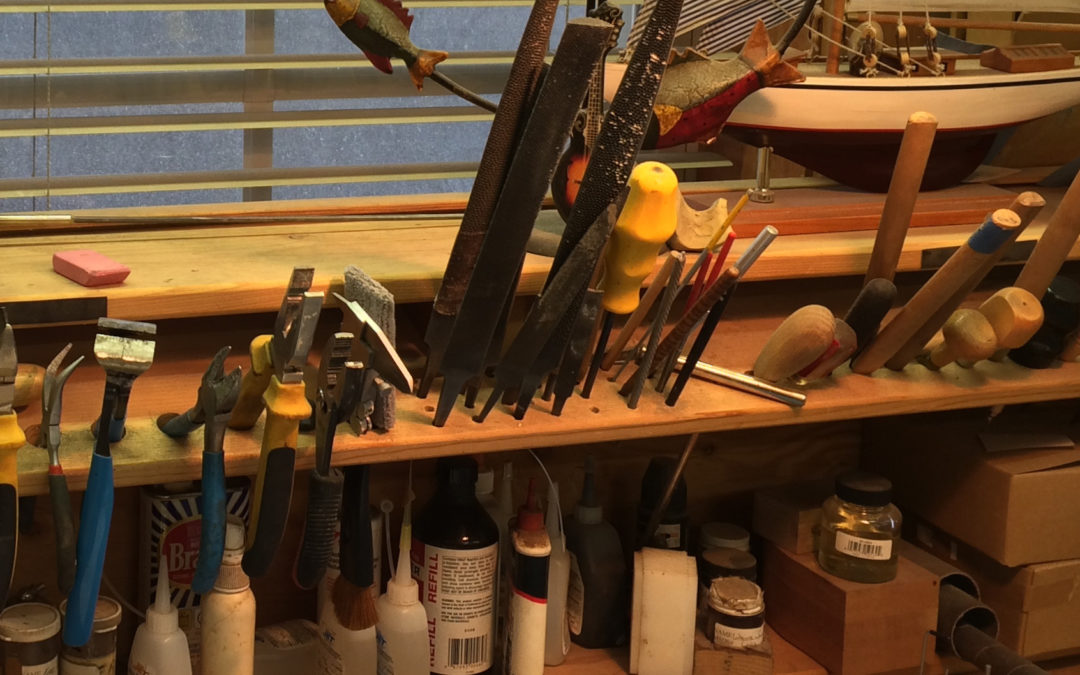‘The marketers seem to grasp that it is not the product but the practice that is really attractive.’
Shop Class as Soulcraft: An inquiry into the Value of Work.
One of the most damaging repairs Bruce gets in (unfortunately fairly often) is due to over humidification. Remember how he sniffs each instrument? One time an instrument had so much mold (from Hawaii including a fair amount of rust and gecko droppings) that we thought he might have been poisoned after breathing it in.
Many of you will think this information is elementary but, as mentioned, we see this type of damage all of the time and much of it is preventable. Here is the real scenario: You save up, sell a guitar, and buy a new mandolin! Of course you talk about it at your local music store, go online and want to treat it right. In three months the finish is starting to look a little cloudy and it’s difficult to play so you send it back. Bruce opens the case and eau du musty trunk permeates the room, he grabs up three honking humidifiers from the case, one of which is snaked down into the soundhole, throws them in the garbage muttering the whole time… You are upset that it is not as issue covered under warranty! and then have to wait several more months while the instrument shrinks to its intended size (dryer fabric sheets are put in the case but some cases find their way directly to the trash). Unhappiness all around.

In a nutshell, you worry about your instrument drying out and cracking, glue breaking loose, finish damage, etc., however the wood that goes into your mandolin is very dry (10-12% when made into instrument parts) and builders try to keep their shops around the 30-50% humidity range. It takes quite a bit for an instrument to get too dry. Excessive heat is the real killer! The Mandolin family of instruments can tolerate changes in temp and humidity much better than its flat-topped cousin but don’t hang your instrument too close to the wood stove or furnace vent, or leave it in a hot car all day, and then wonder why the lacquer has checked and seams are started to separate.
If your mandolin is over humidified it will take weeks, and even months, to dry out and is hard to play as you chase action and intonation around while it’s drying. If you decide to ignore it during this period, here comes the premature plane and re-fret to flatten the now dry and bowed fingerboard. If extremely wet the seams and braces let go and the finish peels, especially if heat is added. This causes a big repair of regluing, and in Bruce’s opinion, the glue joints are never as good as the original. Worn finish happens on any instrument, but peeling finish is ugly and refinishing an entire instrument is costly.
Why is over humidification happening and what are the solutions? First, it is never recommended to put anything holding water inside the instrument body- it’s all raw wood in there and the sound chamber is just not that big. Many players use In-the-case humidifiers that are intended for guitars and thus way too much for the mando, also gauges are used that aren’t accurate or quit working. Bruce recommends running your hand over the back of your instrument and if you can feel a pronounced curl of the maple, it’s too damp. If the action has suddenly become uncomfortable, the top is swelling. Remove all humidifiers, keep it in the case, (unless it’s already smelling like the old trunk) and continually check the neck and make adjustments to keep the fingerboard flat.
The carved instrument family acclimates to its environment and has an adjustable bridge and truss rod to take care of the little tweaks necessary to action and intonation. It goes from the shop or store to your house and will acclimatize to its everyday environment. Here’s the controversial part- eh hem- humidification is very rarely needed. Remember where it came from and many areas are much more humid. Most of our houses are pretty climate controlled all year round. If you always play inside and keep it hanging on the wall where it’s handy you may hear it pop once in a while with no accompanying problems. If you take it from air conditioning to an outside summer jam, or fly from Florida to Montana, let it acclimatize just a bit (adjust it as needed) and jam. Continuous fussing won’t change anything and can lead to the dreaded over humidification.
Your instrument should be able to go where you play, not dictate it. If well made, mandolins are tough little buggers. If you are an active player, running into extremes is inevitable, but with a little common sense and attention to what your instrument is telling you (playablity, intonation) and with a little TLC it will serve you well wherever you play.

